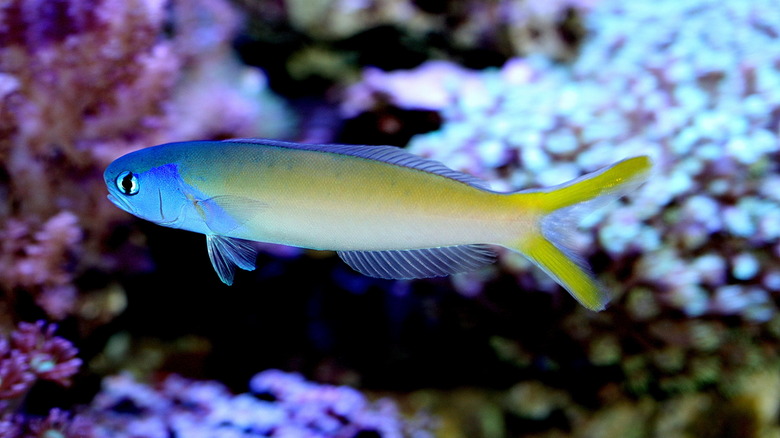This Edible Fish Has The Highest Level Of Mercury Contamination
Mercury concentrations in seafood get plenty of attention from food researchers and concerned consumers, yet the issue is far from resolved. At certain levels of consumption, toxic mercury can affect human health, including impacts on the brain and heart, per Healthline. Identifying fish with high mercury contamination levels is key to enjoying the edible bounty of our oceans, seas, lakes, and rivers.
That's why the National Centers for Coastal Ocean Science (NCCOS) embarked on a years-long mission to pinpoint mercury concentrations in edible fish tissues from areas with varying levels of mercury exposure. The job wasn't easy, given the wide array of aquatic species and where they live. In addition to identifying mercury-laden fish and shellfish eaten by humans, the study expanded to include mercury levels in the marine organisms those fish eat and the waters they inhabit.
Identifying mercury hot spots can lead to the reduction of mercury contamination in seafood and, consequently, in humans. Here's a look at some statistics from in-depth research involving dozens of fish and multiple locations — including which edible fish has the highest level of mercury contamination.
Toxic mercury by fish species
Based on recorded mercury levels in fish and shellfish from 1990 to 2012, the U.S. Food and Drug Administration (FDA) compiled a chart identifying which species have the highest concentrations of mercury. The FDA Monitoring Program pulled information from multiple official reports to produce statistics from 68 species. By clearly defined measurements, tilefish from the Gulf of Mexico harbor the highest levels of mercury. Location matters, as Atlantic tilefish carry considerably less.
Tilefish, nicknamed the "clown of the sea" for its showy rainbow of aqua-green, rosy pink, and yellow hues, cruise along warm-water bands near the ocean floor. Anglers scoop up the edible species from concentrated areas in Florida, New Jersey, and Long Island, N.Y., notes SeafoodSource. They weigh an average of 5 to 10 pounds but can reach up to 80 pounds.
Based on the FDA statistics, which record the Mercury Concentration Mean (PPM) per species, the Gulf of Mexico tilefish clocked in at 1.123 PPM, while the Atlantic version held only 0.144 PPM. Rounding out the top five mercury-laden fish are swordfish, shark, mackerel king, and bigeye tuna. Other tunas, such as albacore and yellowfin, show only about 0.35 PPM.
Popular fish species in the mercury mid-range include marlin, orange roughy, and grouper. Shellfish included in the study show the lowest overall mercury levels, including scallops at only 0.003 PPM, followed by clams, shrimp, and oysters with levels below 0.013. Sardines, tilapia, salmon, anchovies, and catfish all show relatively low mercury concentrations.

